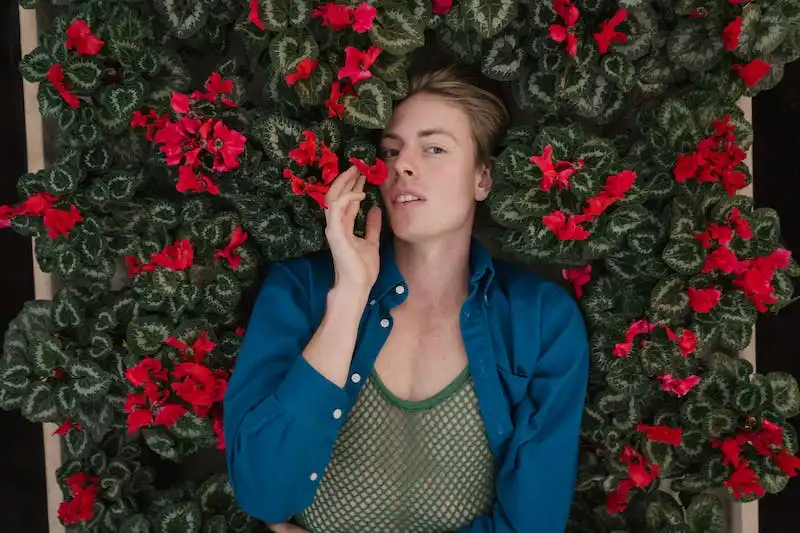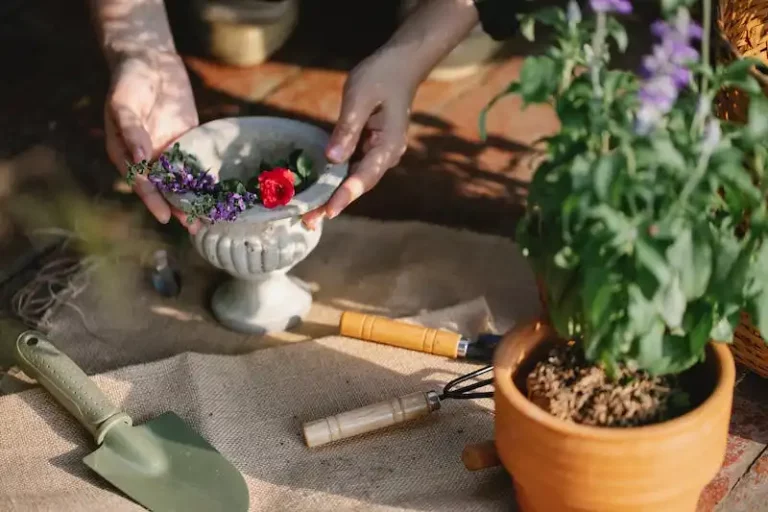The rhubarb plant, also known as Rheum rhabarbarum, is a perennial vegetable that is widely cultivated for its tartly stalks. It is most commonly used in desserts, such as pies and crumbles, but can also be found in savory recipes. Native to Siberia, the rhubarb plant has a long history of cultivation and is highly valued by gardeners for its vigorous growth and health benefits.
Rhubarb plants are easy to grow and thrive in well-drained, fertile soils. They require a sunny spot in the garden, preferably with afternoon shade. Rhubarb plants can be propagated by seed, but it is more common to transplant an established plant. When planting, be careful not to bury the crown of the plant too deep, as this can prevent proper growth.
Once the rhubarb plant is established, it requires minimal care. It should be watered regularly to ensure moisture and nutrients reach the roots. Gardeners can also add composted organic matter around the base of the plant to provide additional nutrients. To prevent the growth of weeds and retain moisture, a thick layer of mulch can be applied.
To control pests, such as the rhubarb curculio beetle, it is recommended to keep the garden clean and free of debris. If the beetle problem persists, gardeners can use physical or chemical control methods. Another common pest that affects rhubarb plants is the rhubarb crown rot, which can be prevented by ensuring the plant has good drainage and proper air circulation.
When harvesting rhubarb, it is important to pull the stalks instead of cutting them. Pulling the stalks allows the plant to continue to grow and produce throughout the season. The stalks should be cleaned and trimmed before they are used in recipes. Rhubarb can be stored in the refrigerator for up to a week, but for longer storage, it can be preserved by canning or freezing.
In conclusion, the rhubarb plant is a versatile and nutritious vegetable that can be grown in a variety of garden sites. With its vibrant stalks and quick growth, it is a favorite among gardeners. Whether used in sweet or savory dishes, the tart flavor of rhubarb adds a unique taste to any meal. So why not give it a try in your garden?
How to Grow and Care for Rhubarb Plants
Gardeners should be careful when growing rhubarb plants, as they require specific conditions to thrive. The best way to start growing rhubarb is through divisions, which can be obtained from a mature plant. Leave the divisions in the ground until the following spring before transplanting them to their final location.
When selecting a site for your rhubarb plant, make sure to choose a location with well-drained soil. Rhubarb prefers slightly acidic soils, so it’s a good idea to test the pH level before planting. If the soil is too acidic, adding lime can help balance it out. It’s also important to choose a site that receives full sunlight, as rhubarb plants require at least six hours of direct sunlight each day.
Once your rhubarb plant is in the ground, it’s important to provide it with proper care and attention. Water regularly to keep the soil evenly moist, especially during dry periods. Mulching around the plant can help retain moisture and keep weeds at bay.
Rhubarb plants are heavy feeders and benefit from regular fertilization. Apply a balanced fertilizer, such as a 10-10-10, in early spring and again in early summer. Be careful not to over-fertilize, as this can lead to weak and leggy plants.
To prevent the plants from becoming overcrowded, it’s a good idea to divide them every three to four years. This can be done in early spring or fall when the plant is dormant. Dig up the plant and separate the divisions, making sure each one has plenty of roots and at least one healthy bud. Replant the divisions at a similar depth as the original plant.
Rhubarb plants can be susceptible to a few common problems. One of the most common is crown rot, which is caused by overly wet conditions. To prevent this, make sure the soil is well-drained and avoid overwatering. Curly leaf is another common issue, typically caused by a fungal infection. Remove affected leaves and dispose of them in the trash to prevent the spread of disease.
Rhubarb plants are usually ready to harvest once they reach maturity, which typically takes around three years. To harvest, simply pull the stalks away from the base of the plant, twisting slightly to detach them. Avoid eating the leaves of the plant, as they contain toxins. Harvesting can generally be done from late spring to early summer.
Rhubarb is a versatile plant that can be used in a variety of dishes, from pies and tarts to sauces and savory dishes. One popular dish is rhubarb crisp, a sweet and tangy dessert often served with vanilla ice cream. Rhubarb can also be used in beverages, such as rhubarb lemonade or strawberry rhubarb sangria.
In colder climates, rhubarb plants will die back in the winter and regrow in the spring. In warmer climates, such as Victoria, Canada, rhubarb plants may remain evergreen throughout the year. If you live in an area with harsh winters, it’s a good idea to cover the plants with a layer of mulch to protect them from freezing temperatures.
In summary, growing and caring for rhubarb plants requires some effort, but the delicious and nutritional rewards are well worth it. With the right conditions and proper management, you can enjoy a bountiful harvest of this tarty vegetable year after year.
Rheum x hybridum R rhabarbarum
The Rheum x hybridum R rhabarbarum, commonly known as Rhubarb, is a plant that is grown for its tartly flavored leaf stalks. It is a hybrid of Rheum rhabarbarum and Rheum x hybridum. Rhubarb is generally grown as a perennial plant with thick, fleshy stalks that are similar to celery.
Rhubarb plants have certain requirements in order to grow well. They prefer a well-drained soil and a sunny spot, although they can tolerate some shade. Rhubarb plants can survive in a range of climate zones, but they are best suited for zones 3-8. They are known to be quite hardy and can withstand frost and cold temperatures.
Cultivation of rhubarb is started either by planting divisions or by seeds. The plants are typically grown in clumps, with each clump containing multiple stalks. Rhubarb plants grow quickly, and in the first year, it is best to avoid harvesting any stalks. This allows the plant to establish a strong root system. In the second year, the stalks can be harvested by pulling them away from the base of the plant.
One of the benefits of growing rhubarb is that it requires relatively little effort to manage. Rhubarb plants are generally disease and pest resistant, although aphids can sometimes be a problem. Weeds should be managed to ensure that they do not compete with the rhubarb plants for nutrients.
Harvesting rhubarb stalks is relatively easy. Simply grab the stalk at the base and pull it away from the plant. The stalks are ready to be harvested when they are large and have a tangy taste. It is important to avoid harvesting more than one-third of the stalks at a time, as this can weaken the plant. However, if some stalks become brown and rotted, they should be removed to prevent disease from spreading.
Rhubarb can be used in a variety of cooking and baking recipes, such as pies, crumbles, and sauces. The tart flavor of the stalks adds a unique tanginess to dishes. Rhubarb can also be preserved by freezing or canning for use throughout the year.
In order to grow rhubarb in a container, it is important to choose a large enough pot with adequate drainage. Rhubarb plants grown in containers should be placed in a sunny spot outdoors. The plants will need regular watering and feeding to thrive.
In conclusion, Rheum x hybridum R rhabarbarum, or rhubarb, is a versatile plant that can be grown in a variety of climates and conditions. With minimal effort, gardeners can enjoy a bountiful harvest of tangy, delicious stalks that can be used in a range of culinary creations. Whether grown in a garden or in a container, rhubarb is a plant that is sure to delight both the grower and their neighbors alike.
Source: example.com
What You’ll Learn
In this article, you will learn many things about the rhubarb plant. You will learn how it is planted and grown by many growers around the world. The best growing condition for rhubarb is in well-drained soil in a sunny location. It has curly green leaves that grow above the ground, while the edible part of the plant is the plump, red stalks. You will also learn about the health benefits of rhubarb and how it is used in cooking and preserving goods.
This guide will take you through the steps of cultivation, from planting to harvesting. You will learn how to manage weeds, mold, and disease in order to have a better yield. In the section on harvesting, you will learn when and how to pull mature rhubarb stalks for the best taste and texture. One popular variety of rhubarb is Chipman’s Canada Red, which is known for its excellent flavor.
Furthermore, you will learn about the climate conditions that are ideal for rhubarb cultivation. Rhubarb is generally grown in cooler regions and is often associated with cold climates. You will also discover that rhubarb can be grown from rhizomes, which are underground stems that store energy for the plant. In addition to its culinary uses, you will learn about the medicinal benefits of rhubarb.
Another important topic covered in this article is pest management. Rhubarb plants can be affected by pests such as the rhubarb beetle. You will learn how to identify and deal with these pests in order to protect your plants and ensure a healthy crop.
Throughout the article, there are references to additional resources where you can find more information about rhubarb cultivation and recipes. These references include libraries, websites, and gardening guides.
In conclusion, this article provides a comprehensive guide to the rhubarb plant. Whether you are a beginner or an experienced gardener, you will learn everything you need to know about growing and enjoying this versatile plant.




